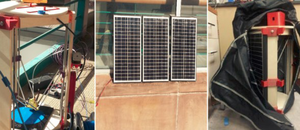
The recent introduction of RepRap (Self-Replicating Rapid Prototyper) 3-D printers and the resultant open source technological improvements have resulted in affordable 3-D printing, enabling low-cost distributed manufacturing for individuals. This development and others such as the rise of open source-appropriate technology (OSAT) and solar powered 3-D printing are moving 3-D printing from an industry specific technology to one that could be used in the developing world for sustainable development. In this paper, we explore some specific technological improvements and how distributed manufacturing with open-source 3-D printing can provide sustainable development by creating wealth for developing world communities through the ability to print less expensive and customized products. Conclusions on the technical viability of 3-D printing to assist in development and recommendations on how developing communities can fully exploit this technology have been outlined.
- Want something designed: Requests for 3-D printable open source appropriate technology
See also[edit | edit source]
- High-Efficiency Solar-Powered 3-D Printers for Sustainable Development
- Open-source, self-replicating 3-D printer factory for small-business manufacturing
- Distributed manufacturing with 3-D printing: a case study of recreational vehicle solar photovoltaic mounting systems
- Global value chains from a 3D printing perspective





